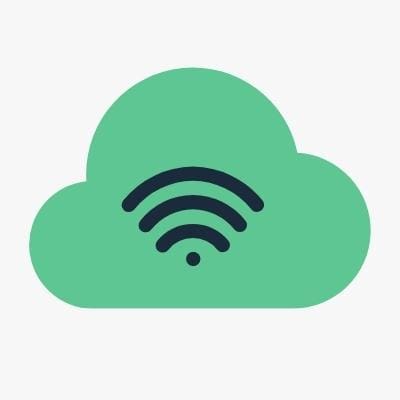How to Check Fibre in Your Area
The majority of ISPs and Networks in South Africa have coverage maps. This allows you to check fibre in your area. The process for checking fibre coverage is very similar. This article provides a definitive guide to finding fibre in your town, city or street address.

Choosing the Right Fibre Package
It’s essential to match your household’s internet usage with the right package to ensure you get the best value for money and performance. Make sure you check out our cheapest fibre deals to find value deals.
Light Users
A basic fibre package with lower speeds and data limits may be ideal if your primary activities include browsing the web, checking emails, or occasional streaming. These options are usually the most cost-effective for households with minimal internet demands, ensuring you don’t overpay for unused bandwidth.
Heavy Users
A high-speed, uncapped fibre package is the better choice for households with heavy internet usage – such as frequent high-definition streaming, online gaming, or remote work. This ensures smooth and uninterrupted connectivity, even when multiple devices are connected simultaneously. Opting for uncapped packages also eliminates the worry of running out of data during the month.
Key Factors to Consider
To choose the best fibre package, compare different options using these criteria:
Download and Upload Speeds
Higher speeds are essential for streaming, gaming, or uploading large files.
Data Limits
Uncapped packages offer unlimited internet usage, but capped plans may be cheaper for light users.
Monthly Costs
Balance your budget with your connectivity needs to avoid overpaying or under-provisioning.
Contract Terms
Review the contract length, cancellation policies, and any penalties for early termination.
Special Offers and Promotions
Many South African ISPs offer discounts, free installation, or reduced pricing for the first few months. Monitor these promotions (like Black Friday) to maximise value. However, carefully read the terms and conditions, as promotional rates often revert to standard pricing after the initial period.
Optimise Your Usage
South Africa’s fibre landscape continues to grow, with competitive offerings from providers such as Vumatel, Openserve, and Frogfoot. Use comparison tools available on the fastest fibre to evaluate packages side-by-side and choose the best one for your needs.
For light users, opting for a capped package can save money, while heavy users will benefit from the stability and speed of uncapped options. You can ensure a reliable and satisfying fibre experience by assessing your internet habits and budget.
Key Factors to Consider When Choosing a Package
1. Assess Your Internet Needs
Determine whether your household uses the internet primarily for light activities (like browsing and email) or for heavy usage (such as streaming, gaming, or working from home).
2. Consider Download and Upload Speeds
For heavy users, higher speeds are essential for smooth streaming, gaming, or uploading large files. Light users can opt for lower speeds to save costs.
3. Evaluate Data Limits
Decide between capped and uncapped packages. Uncapped plans offer unlimited usage, while capped options are budget-friendly for light users.
4. Compare Monthly Costs
Balance your budget with your connectivity needs. Avoid paying for bandwidth you don’t use or opting for a package that doesn’t meet your requirements.
5. Understand Contract Terms
Review contract lengths, cancellation policies, and any penalties for early termination to avoid unexpected fees.
6. Look for Special Offers
Keep an eye out for discounts, free installation, or promotions (such as Black Friday deals) to maximise value.
7. Read the Fine Print
Carefully examine terms and conditions on promotional offers, as introductory rates may increase after the initial period.
8. Check ISP Reliability
Choose a trusted provider with proven reliability, such as Vumatel, Openserve, or Frogfoot.
9. Use Comparison Tools
Leverage tools on fastestfibre.co.za to compare packages and find the best fit for your needs and budget.
10. Plan for the Future
Consider future internet needs, such as adding more devices or starting remote work, to ensure your fibre package remains adequate.
4 Steps to Finding Fibre in Your Area

1. Check Coverage
coverage map. If you’re unsure of which ISPs serve your area then check our fibre coverage map where we’ve split the map into ISPs serving major SA cities and towns – Cape Town, Joburg, Pretoria, Durban, Port Elizabeth and Soweto.

2. Add Your Address
Type in the address where you’re looking to install the fibre connection. Select the right street address from the options provided. There’s usually a button to run the search. Some ISPs do this automatically

3. Fibre Availability
If there’s fibre already available in your area you will usually be shown a selection of fibre packages that are available. Review the packages against your needs. You don’t want to buy a package that’s so expensive that end you end up paying for unused data and bandwidth. At the same time, you don’t want to be too spendthrift and end up with a fibre package that doesn’t meet your requirements. For an excellent review on broadband packages check our package review here.

4. Requesting Fibre
If you find that fibre isn’t available in your area, don’t disappear, you have a couple of options. Firstly, you might want to look at alternative packages – e.g. LTE. Alternatively, if you’re set on getting the fibre you can still apply for it. The ISP will usually provide you with an email notification when fibre becomes available..
Fibre Coverage Across South Africa
The fibre coverage map from WebAfrica below covers the entire country – Cape Town, Johannesburg, Durban, Pretoria and other major cities and towns. You can also check the map against key ISPs in your area, including Openserve, Vumatel, Frogfoot and others.
Once you’ve found the fibre network that works for you, select a package that works.
Questions related to “Fibre In My Area” and Fibre Coverage Maps
Here’s a list of common questions about fibre coverage and coverage maps in South Africa
How do I check fibre my in area?
Each ISP and network is different, but typically it’s very simple. You’ll see a fibre coverage map. Click in the search bar. It may prompt you for your postcode. From there there you’ll see a Google Maps graphic with a highlighted overlay of the areas covered. If you’re covered, great, there’s fibre in your area.
What do I do I can't find Fibre in my Area?
Generally if you live the main suburbs of South Africa – Johannesburg, Durban, Cape Town, or Pretoria – you will be likely to see fibre shaded areas on the coverage map. If you can’t find fibre in your area, you’ll need to check (1) which providers are available in your area (2) any timelines for rolling out fibre in you area.
Are All Areas of a City Covered by a Network?
No, they’re not. Oftentimes the coverage is limited to very specific areas within a city. For this reason, we encourage first-time visitors to search for their street address on the fibre coverage map.
If there's no fibre in my area, will there ever be?
It’s likely that if you live in major urban area that fibre will be available in your area at some point in the future. Fibre will continue to expand across South Africa as demand for it increases.
How do I Check My Fibre Coverage?
The best place to check fibre coverage in your area is by visiting one of the main internet service providers (ISPs) and checking if they have coverage. This is a good place to start. Once you’ve done that double-check on the fibre coverage map of the provider you’re looking at, just to make sure you’re covered on your street (i.e. fibre to the home)
